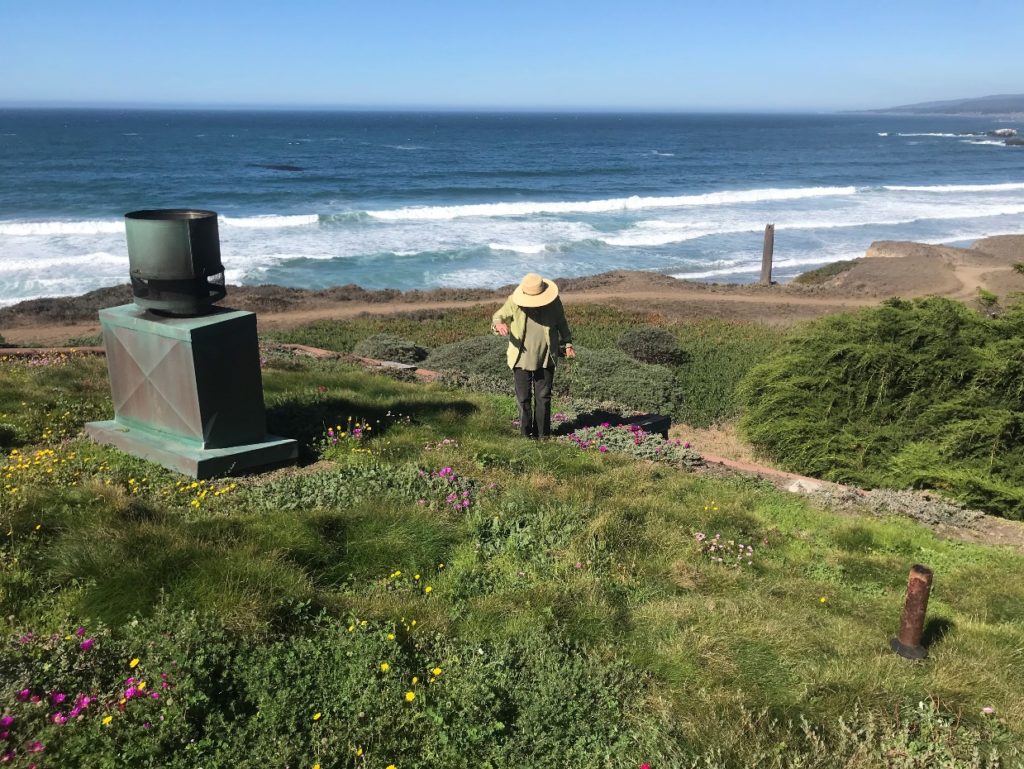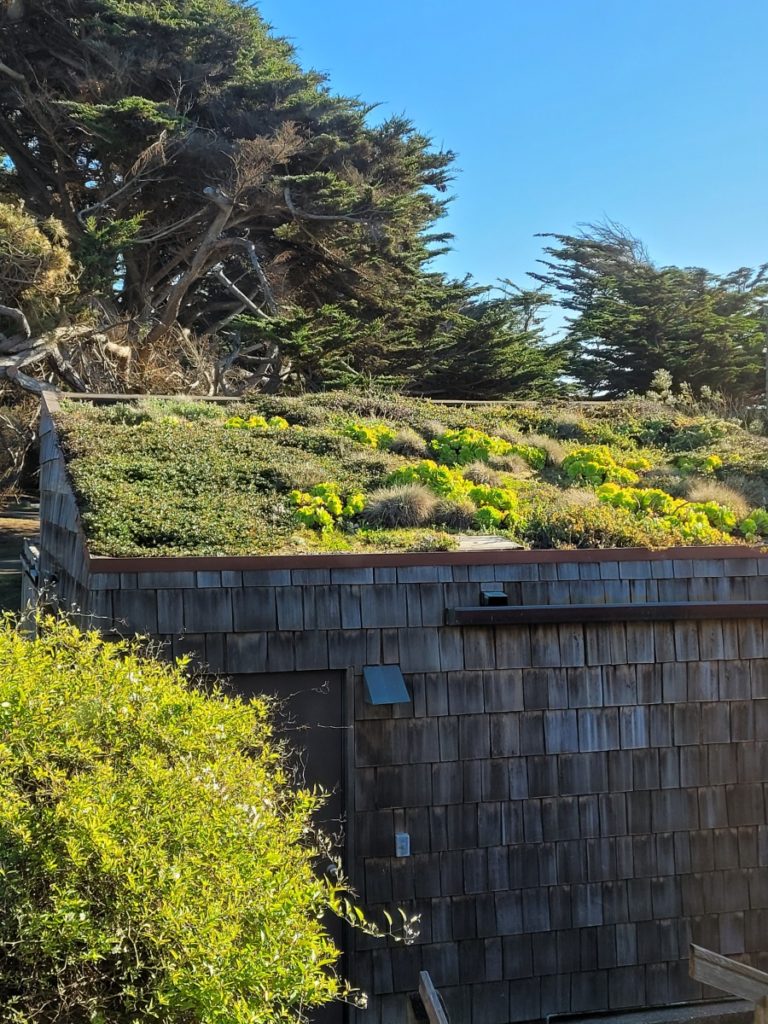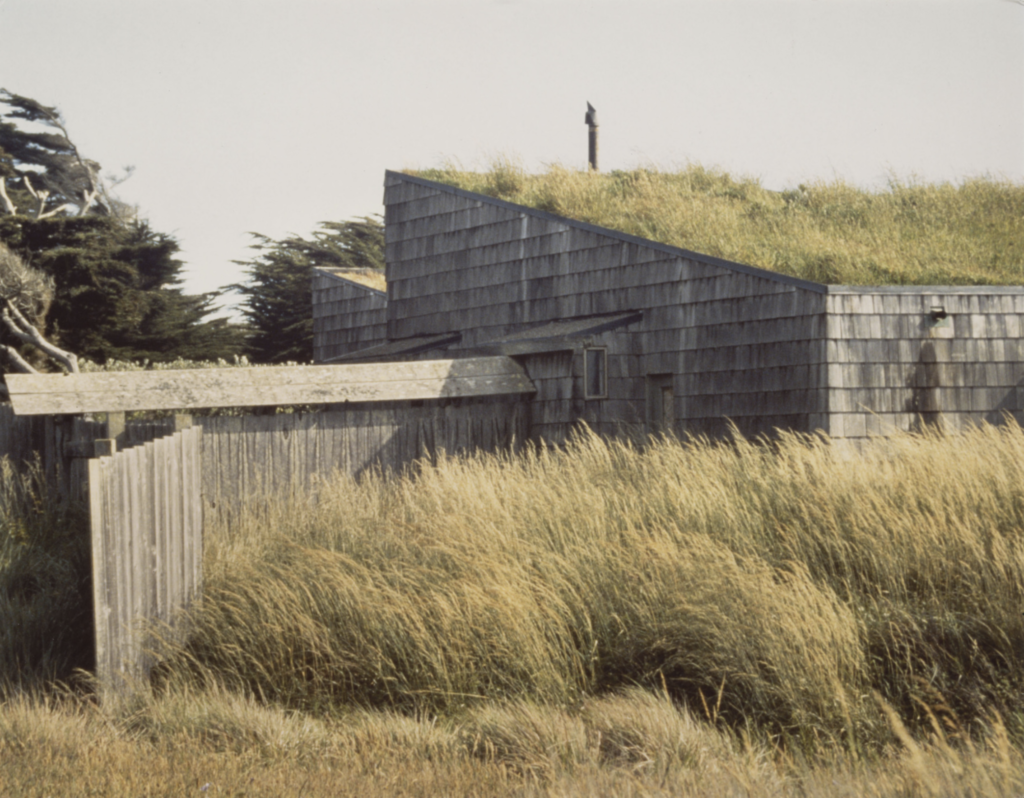Sea Ranch is a planned community along 10 miles of California’s northern Sonoma Coast that was developed in the early 1960’s. I remember driving past it around that time when I lived in Jenner, a few miles south of there.
Sea Ranch was intended to be a second home community that embraced its surrounding environment. The development has held true to its original ideology of living lightly on the land through the oversight of its Design Review Committee.
Many of the structures have green or living roofs, although only a fraction of the 1,800 buildings have living roofs, and many of these are confined to the garage, connecting the building directly to the surrounding earth while providing a pathway for grazing deer.
Delores Jones and her husband are owners of one of Sea Ranch’s historical sod roofed houses, located on a bluff overlooking the ocean. Their house is bermed into the earth, so that it is below ground level. In the 1960’s the living roofs at The Sea Ranch were collectively referred to as “sod roofs,” originally planted with native grasses. The Jones’s house was first planted with just grasses, but it has been replanted to reflect the meadow below with native wild flowers, meadow bunch grass, and the nearby bluff top succulents. It took a few years of trial and error until the right plants were identified to withstand the harsh windy ocean-side environment.
Green roofs have gained global momentum during the last three decades as water conservation becomes more of an issue along with the need to manage rainwater runoff in urban areas.
Preventing leaks has to do with the process of creating an impermeable roof. The technology has evolved allowing for the building of living roofs that are leak proof and using lighter weight growing media, which cuts down on the construction costs used for older, heavier roof gardens. The Jones’s was built with a watertight 5-ply membrane, placed atop the construction roof with about 8-10 inches of plain old top soil added. At one time the roof did leak where the membrane was compromised when water entered around the chimney and vent pipes from a supersaturated roof caused by a failed automatic irrigating system. Resealing the roof with tar nearly 20 years ago has taken care of any further leaking issues. Not too bad for a roof that is 55 years old!
The vulnerability of wild fires that weighs heavily on the minds of everybody living in rural California makes the risk of fires a growing concern for all. Also, fire danger is on the minds of insurance companies that have been increasing insurance rates because of fire risk, or in many cases, canceling policies all together. As most of Sea Ranch’s green roofs are actually brown roofs during the summer time when the grasses dry out, the roofs need to be managed as one does other fire reduction measures, which includes ensuring there is defensible space around buildings.
Thus, the roofs may need mowing and/or watering so that they do not provide fuel for the spreading of a fire. With proper plant selection, watering systems, and growing media, sod/green roofs may actually provide a fire barrier. As soil does not burn, sod roofs may provide protection for the roof below. 
Living roofs do require maintenance. A grass roof will grow on its own during the rainy winter-time, but needs to be maintained before the summer fire season begins in the same way that is required by the grasses surrounding your home as described above. If native wild flowers are to be enjoyed, watering and removing obnoxious weeds that blow in must be part of the maintenance process. Fertilizing is sometimes also necessary as the growing medium may not regenerate its nutrients as does the soil in a meadow. The roof may need to be nurtured as you would an interior garden.
A green roof provides a rainwater buffer, purifies the air, reduces the ambient temperature, regulates the indoor temperature, saves energy, decreases carbon footprint, increases life span of a roof, and encourages friendly habitat. Also it connects the house to the surrounding meadow and increases a sense of naturalism at the Sea Ranch environment. It has a pleasing aesthetic appeal and provides a place for a picnic on a grassy roof top knoll. It helps manage rain fall by the water being absorbed into the soil, rather that running directly off the roof.
You can read the original article at www.greenroofs.com

Very informative.
Thanks and regards